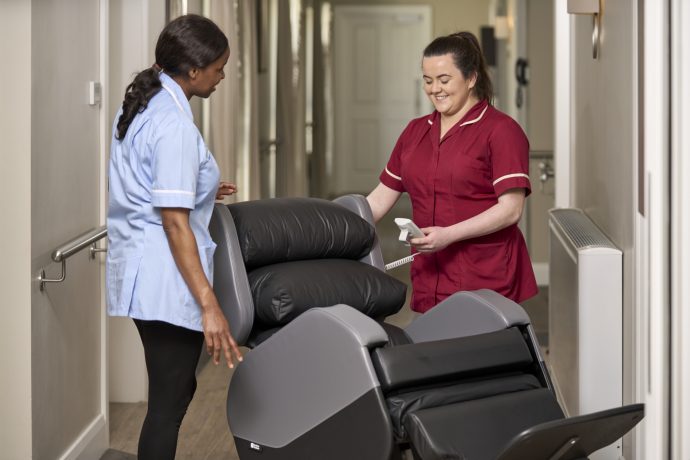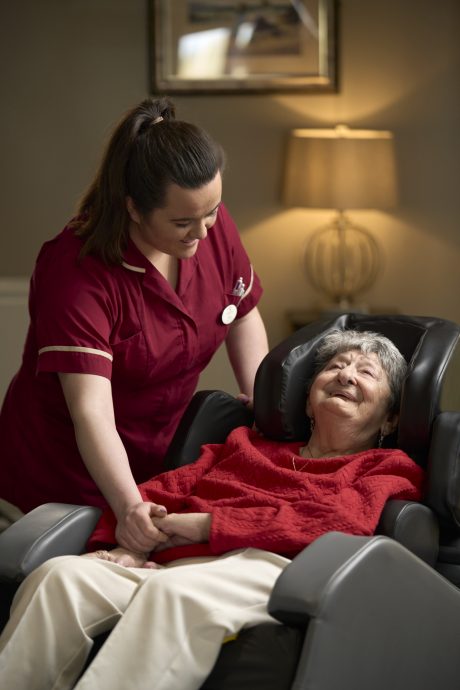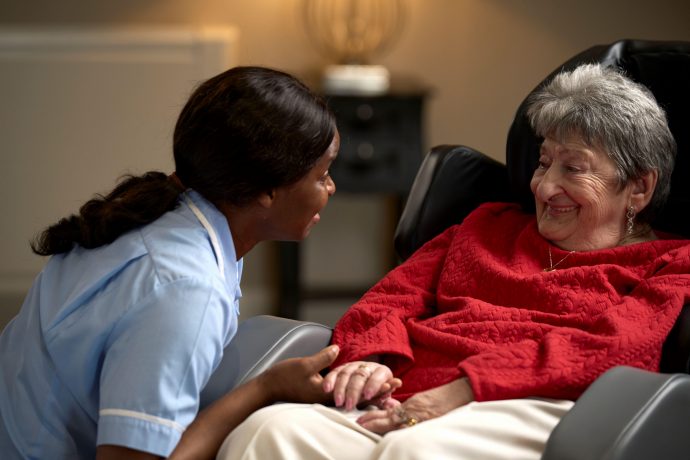
2nd September 2025


Let our online product finder guide you through our simple steps to choose the chairs that best meet your patient’s needs.
Seating Solution FinderThe Envelo cushion provides excellent pressure redistribution and comes as standard on all Seating Matters chairs, meeting the clinical needs of most clients.
Explore Envelo RangeSeating Matters specialises in clinical, therapeutic seating solutions designed to improve patient care and safety, offering products for pressure injury prevention, postural support, and mobility assistance in healthcare settings.
Learn MoreDiscover how Seating Matters has transformed lives with our innovative seating solutions - read our inspiring customer success stories now!
Customer StoriesUsed in academia, in clinical practice and with caregivers around the world to guide their practices around specialist seating.
Download Free HandbookWe are often asked about pressure management in seating and specifically in relation to the cushions.

There is a lot of incorrect information out there in terms of pressure management and cushions, so I wanted to write an article to outline some of the challenges around this issue and provide some evidence-based solutions.
This information will be useful for enterostomal nurses, wound care nurses or tissue viability nurses who will all primarily be dealing with wound care but also occupational therapists, physiotherapists, care assistants and anyone dealing with seating to manage pressure risk in patients with low mobility
When considering pressure management for a patient at risk of pressure injuries, pressure ulcers, wounds or skin redness (sometimes referred to as bed sores) traditionally two things have been utilized in response:
There are some good pressure cushions available which can contribute to protecting the integrity of the patient’s skin. These are long-standing products which are widely used and well marketed around the world.
However, when I teach therapists and clinicians, I explain how the cushion is only ¼ of the solution when it comes to pressure management in seating.
When clinicians are considering pressure management in seating, it is still common practice for many to think mainly about the cushion on the chair and not the other features of the chair itself. This can often lead to an over reliance on high cost pressure cushions to solve this clinical problem with mixed results.
The other chair components have a vital impact on pressure redistribution in seating and without considering these other features, the patient may still be at risk of pressure ulcer development, even with the specialist cushion in place.


Often key things are missed in terms of reducing pressure ulcers in seating by adding just a pressure cushion to a patient's chair to redistribute or ‘relieve’ pressure, without considering the other aspects of the patient’s seat.
By focusing on the cushion alone, key opportunities for combating pressure ulcers are being missed and we can sometimes increase the risk to the patient.
Pressure is reduced by increasing the surface area contact of the person’s body with the chair.
When the body is loaded properly, the feet, legs, back, arms and head are all in contact with the seat.
However, often a specialist pressure cushion is placed on top of a standard armchair, sofa, wheelchair or existing specialist chair. When this happens, we could be adding pressure to their seated area.
How? The addition of the cushion alters the fixed dimensions of the chair, often lifting the person’s feet off the ground or off their footplate meaning they are dangling or bearing less weight. Up to 19% of the person's body weight can be taken through the feet when loaded properly in seating and so without a footplate, this weight from their feet is now going through their seat, increasing the pressure.
Therefore, even though they might have a good cushion, the weight and pressure in their seated area is increasing.
If a pressure cushion has been stacked on top of an existing standard cushion, or placed on a chair which is too wide, it can reduce the effectiveness of the arms, lateral supports and head rests in holding the person in a good posture.
In many cases, you can tell just by looking at the patient that they probably do not feel stable nor supported by the chair. They may not be able to reach the armrests. Their feet may be dangling and not reaching the floor. They might have their arms crossed to stabilise themselves in the seat. They might also be leaning to the side, leaning forward or sliding from the chair. Each of these factors can create friction and shearing forces and can also increase the weight going through one side of the body compared to the other and therefore lead to the development of pressure injuries. Adding a cushion and not considering how this affects postural support can therefore detrimentally affect pressure.
A chair which does not have tilt in space, such as an armchair, a riser recliner or a sofa,
does not allow the patient to independently shift their weight when they become uncomfortable.
Shifting weight or repositioning, can lead to increased blood oxygenation and therefore reduce the risk of pressure ulcers.
This repositioning should happen a minimum of once every 2 hours and is often required by international healthcare guidelines.
The chair needs to allow this effective weight shift to happen by use of functions such as tilt in space, to correctly and effectively redistribute pressure off bony parts of the body. Simply adding a cushion does not achieve this.
Adding a pressure cushion to a chair which is maybe already unsuitable for the patient will not solve the problem fully. If the dimensions of the chair are too big and it does not provide postural support or effective repositioning, simply adding a pressure cushion will not be an effective solution for the patient.
To prevent pressure injuries in seating we should look at the whole chair, not just the cushion.
The cushion will not likely be most effective unless the first three principles have been implemented.
The Seating Matters standard cushion is made up of two distinct layers:
TIP: Test the effectiveness of your cushion with the 'bounce back' test. Press the palm of your hand firmly into the cushion, the contours of your hand should be enveloped by the foam, then remove your hand. The foam should bounce right back.
We would recommend for new chair users that you should assess the user and if appropriate, use the Seating Matters cushion in conjunction with the Four Principles of Pressure Management. This is likely to provide medium to high pressure management.
For those at risk of pressure injuries or those who may already have a Grade 3 or 4 pressure injury or open wound, we would recommend that you consult with a Tissue Viability Nurse for their input and refer to your own facility guidelines.
Our clinically tested cushion is provided on all Seating Matters chairs as standard and is removable. If you are having success with using another cushion we suggest that you can continue to use it on the Seating Matters chair, adapting the dimensions of the chair to enable the full loading of the body.
Sign up to our mailing list to get practical tips and latest research delivered to your inbox!
Take the next step to achieve clinical excellence and a 24 hour package of care for patients.

Arrange a free, no obligation seating consultation with your local Seating Specialist.

Schedule a call at a time that suits you to speak with our experts.

Arrange a free, no obligation trial of clinical, therapeutic seating

2nd September 2025

15th August 2025

15th August 2025